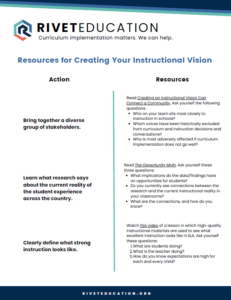When my daughter was three, we giggled at Laura Numeroff’s book, If You Give a Mouse a Cookie. Every time we thought the mouse was satisfied, he would want something more! From cookies to milk to a straw to a napkin, the story goes on and on until it finally comes back full circle to the cookie, which was what he wanted from the beginning!
This beloved book reflects why it is vital for states, districts, and schools to build an instructional vision. The instructional vision is that first cookie that keeps educators demanding more and more of the right things for students. Here’s how:
- If you build an instructional vision, you are naming what great instruction looks like for our students.
- And if you know what great instruction looks like -> you will need high-quality instructional materials (HQIM) to get the job done.
- And if you have HQIM -> you’ll need a roadmap to support implementation efforts and ensure everyone stays focused and on track.
- And if you have a roadmap -> you’ll need curriculum-based professional learning to support each phase.
- And if you have all of those things in place -> you can improve student outcomes and build equity of access for all, which is why we are all here anyway.
Why does an instructional vision matter?
A strong instructional vision does two things:
- Builds investment in and demand for things that matter.
- Drives alignment and connectivity with a throughline of focus.
Without the vision, time will continue to be wasted on decisions, activities, and expenditures that will not lead to improved student outcomes, as has been the case throughout the education system. Students need to be proficient in reading and math. There is no time to waste, yet we often take off toward that ultimate goal for our students without knowing what the destination even looks like.
Creating a Strong Instructional Vision
It is important to note that the process of creating an instructional vision is just as important as the vision itself. The process doesn’t need to be complicated or arduous, but it does need to be strategic and meaningful.
If you’re ready to define a concrete instructional vision, here’s how to get started.
-
- Bring together a diverse group of stakeholders. Establishing a culture of trust and transparency across stakeholder groups and listening to their voices increases investment, builds clarity, and negates the feeling of a “top-down” initiative. In Creating an Instructional Vision Can Connect a Community, Brittany Jacobs points to key questions for your reflection as you build the team of stakeholders:
Who on your team sits most closely to instruction in schools?
Which voices have been historically excluded from curriculum and instruction decisions and conversations?
Who is most adversely affected if curriculum implementation does not go well?1
-
- Learn what research says about the current reality of the student experience across the country. According to TNTP’s Opportunity Myth2, the overwhelming majority of students do not have access to grade-appropriate assignments, strong instruction, deep engagement, and teachers who hold high expectations. Knowing students spend the majority of each school year (the equivalent of six months) on below-grade-level assignments is alarming and a call to immediate action.
- Clearly define what strong instruction looks like. Ask yourself these questions regarding strong instruction: What should students be doing? What should teachers be doing? How do you know expectations are high for each and every child?
- Build your awareness of the current reality of instruction in your schools. Conducting classroom walkthroughs centered and focused on students’ experiences, interactions, and expectations is the most comprehensive data source to help you understand the level to which students are receiving excellent instruction.
- Build a vision based on your research, findings, and beliefs about improving student outcomes. Once the stakeholders internalize the true picture of the student educational experience and its shortcomings, define what strong instruction looks like, and build awareness of the district’s alignment or misalignment with strong instructional practices, the group will create a vision that prioritizes focus and drives progress through a call to action.
- Communicate, communicate, communicate. Julia Kaufman at RAND Corporation once said, “The communication is as important as the effort itself.” For a vision to become a part of the culture of a school or district, it needs to be communicated early and often, and leaders must exemplify the vision in their actions and decisions.

Resources for Creating Your Instructional Vision
| Action | Resources |
| Bring together a diverse group of stakeholders. |
Read Creating an Instructional Vision Can Connect a Community. Ask yourself the following questions:
|
| Learn what research says about the current reality of the student experience across the country. |
Read The Opportunity Myth. Ask yourself these three questions:
|
| Clearly define what strong instruction looks like. |
Watch this video of a lesson in which high-quality instructional materials are used to see what excellent instruction looks like in ELA. Ask yourself these questions:
|
| Build awareness of the current reality of instruction in your schools. |
Use an instructional walkthrough tool to conduct classroom walkthroughs centered and focused on students’ experiences, interactions, and expectations.
|
| Build a vision based on your research, findings, and beliefs about how to improve student outcomes leading to opportunities for bright futures. |
There are many resources to guide you through the vision-setting process.
EdReports has created a collection of sample instructional vision statements for math, ELA, and science (EdReports). |
| Communicate, communicate, communicate. |
In John Kotter’s Leading Change, he dives deeply into the importance and “how” of developing a vision and strategy and communicating the change vision. He establishes a sense of urgency around the consistency, frequency, and deliberate nature of communication. His guiding points are:
You can register to download the free 8-Step Process for Accelerating Change or purchase Leading Change here. |
1Jacobs, B. (2022, November 15). Creating an Instructional Vision Can Connect a Community. Education Elements. Retrieved July 25, 2024, from https://www.edelements.com/blog/creating-an-instructional-vision-can-connect-a-community
2TNTP. (2018, September 25). The Opportunity Myth: Executive Summary. TNTP. Retrieved July 28, 2024, from https://tntp.org/wp-content/uploads/2023/02/TNTP_Opportunity-Myth_Executive-Summary_WEB.pdf







